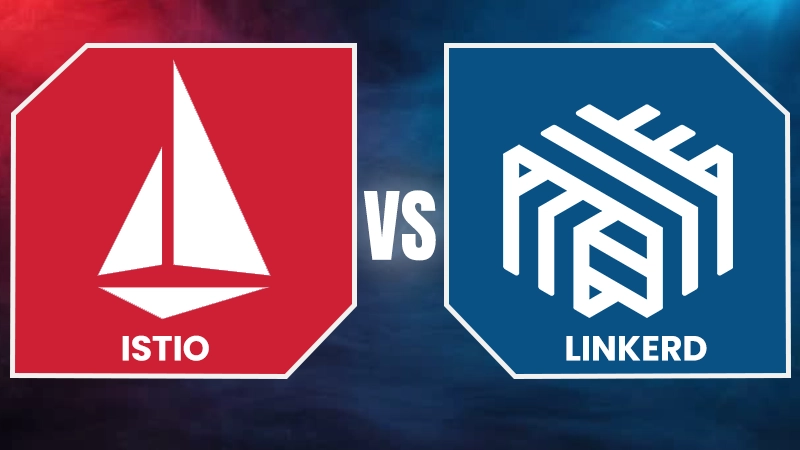In a distributed application, a service mesh is a specific infrastructure layer that controls and secures communication between microservices. Small, autonomous services known as microservices frequently connect with one another through a network to construct an application. A service mesh can manage and control this communication, assuring its dependability, security, and visibility.
Typically, service meshes are implemented as a collection of proxies that act as a communication bridge between the microservices. With the help of proxies, sophisticated functionality like load balancing, service discovery, and traffic routing may be implemented. Service meshes also offer security features, including access control, encryption, and mutual TLS authentication. Additional observability capabilities that service meshes can offer include metrics gathering, distributed tracing, and logging, which aid in diagnosing and debugging problems in distributed applications.
Microservices provide many benefits, such as scalability, flexibility, and resilience, but they also introduce new challenges, such as service discovery, load balancing, and securing cloud-native applications. Many solutions are available in the market for service mesh, but the main ones are Istio and Linkerd. So, we will be discussing their functionalities and other features thoroughly.
Istio vs. Linkerd: Comparing the Top Service Mesh Solutions
Istio is an open source service mesh that layers transparently onto existing distributed applications. It offers a uniform and efficient way to secure, connect, and monitor services; so you can perform load balancing, service-to-service authentication, and monitoring with few or no service code changes.
Linkerd is a service mesh that empowers users with observability, reliability, and security in their Kubernetes applications without needing any modifications to the application. It monitors per-service success rates and latencies, automatically retries failed requests and encrypts and validates connections between services, all without requiring code changes.
Istio and Linkerd provide the top service mesh solutions but have a lot of different functionalities. Let’s discuss things thoroughly so you know what to look for when choosing a mesh solution. We will discuss the tools based on a few parameters, such as security, traffic management, etc.
Traffic Management
Istio offers certain high-level traffic management features like load balancing, fine-grained routing, and circuit breaking. Thanks to its robust routing engine, you can route traffic using a variety of parameters, including HTTP headers, URL routes, and more. Additionally, you can distribute traffic among many services’ versions and progressively introduce new ones.
Istio can automatically limit traffic to a service when it is underutilized or failing to prevent future harm. Circuit breaking is a crucial aspect of guaranteeing the dependability of the service. To ensure that the burden is divided fairly and that no instance is overloaded, Istio can distribute traffic across many instances of a service.
Linkerd can perform core traffic management functions, such as load balancing and service discovery. To find the IP address, Linkerd will send a request to the Kubernetes API. In the event that the IP address is connected to a Service, Linkerd will balance the load among the service’s multiple endpoints and implement any service-specific regulations.
On the other hand, if a pod is connected to the IP address, Linkerd can also spread traffic across multiple instances of a service to ensure that the load is distributed fairly and that no instance is overburdened. Since Kubernetes’ default load balancing is ineffective for these kinds of services, Linkerd’s load balancing is highly beneficial for load balancing gRPC (or HTTP/2) services in Kubernetes.
Security
Istio offers a number of different security options, including mutual TLS authentication, access control restrictions, and network encryption. Istio has the capability to automatically generate and manage TLS certificates for all services running in a Kubernetes environment. This makes it possible for services to communicate securely with one another.
Istio enables users to design their own access control policies, which determine which services can communicate with one another and under what circumstances. Istio has the capability to encrypt all network traffic that occurs between services to protect it from eavesdropping and other forms of manipulation.
Linkerd also provides several security capabilities, like mutual TLS authentication and service-level authorization, for its users. Linkerd can generate and manage TLS certificates for all services within a Kubernetes environment, enabling secure communication between those services.
In addition, Linkerd is able to enforce policies that regulate which services are able to communicate with one another and which are prohibited from doing so. You can limit the sorts of traffic that are permitted to meshed pods thanks to Linkerd’s authorization policy. For instance, you can restrict communication to a specific service (or the HTTP route on a service) so that it can only originate from a select group of other services; you can require that mTLS must be used on a particular port; and so on.
Observability
Istio offers advanced observability features, such as distributed tracing and extensive metrics collecting, to its customers. Istio has the capability to automatically generate trace data for requests that traverse several services. This enables you to track requests throughout your whole environment. Istio has the capability of collecting detailed metrics for all the traffic that passes through the service mesh. These metrics can assist you in monitoring and improving the performance of your services.
Linkerd offers characteristics that allow for observability, such as the collecting of metrics. Linkerd can collect metrics for all service mesh traffic to help you monitor service performance. It can be configured to emit trace spans from proxies, showing request and response times. Linkerd offers many of the features associated with distributed tracing, but it does so without needing any changes to the setup or the application itself. These features include aggregation of service health, latencies, and request volumes, as well as live service topology and service graphs.
Ease of Use
Istio’s complexity and extensive feature set make for a more challenging learning curve than similar platforms. Istio has a more complicated design than similar platforms, which can make it more difficult to deploy and operate. However, Istio offers a broad variety of additional features that can help implement Kubernetes in particularly complex contexts.
Linkerd is a more lightweight service mesh, and it is also easier to use and manage. Because of its more straightforward architecture, Linkerd may be less complicated to set up and administer. In addition, Linkerd gives you access to fundamental functionality that can be helpful in more straightforward Kubernetes deployments.
Conclusion
Service mesh technologies like Istio and Linkerd manage and secure microservice communication in distributed applications. Load balancing, service discovery, traffic routing, mutual TLS authentication, access control, and encryption are available in both solutions. Metrics collecting, distributed tracing, and logging are also available in Istio and Linkerd. Istio supports sophisticated microservices architectures at scale with a more complete service mesh solution. Linkerd is a simple and lightweight service mesh solution, which is straightforward to deploy and manage. Users can choose between these two service mesh solutions as per their usage needs for a lightweight service or one with several complex features.



